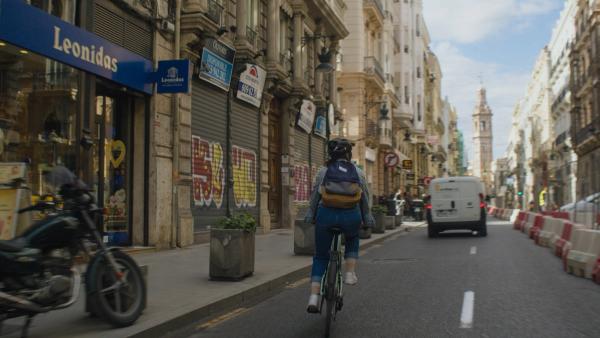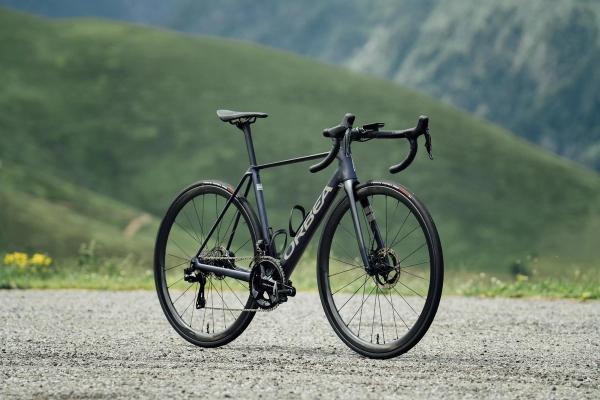The top 10 tech trends of 2023
From gearing revolutions to blurred boundaries between the disciplines, it was a tough year for the bike industry but there was still plenty of progress and innovation
Patrick Fletcher
Deputy Editor
© Velo Collection/Getty Images, Classified, Canyon, Lotus, Zwift
Tech trends of 2023
The bike industry never sits still, and 2023 was a year of progress and innovation, even if there were more than a few financial headaches.
Here at GCN, we've kept a close eye on the latest tech developments throughout the year, and we've gathered 10 of the most significant trends that emerged as we look back at the past 12 months before looking ahead to 2024.
We've seen a number of new gearing set-ups on the road, we've seen patterns emerging in the ever-booming gravel and e-bike sectors, and we've stepped further into the future with virtual gears and Artificial Intelligence.
Read on for 10 of the biggest tech trends from 2023. By Alex Hunt, Tom Hallam-Gravells, and Patrick Fletcher.
The return of the lightweight bike
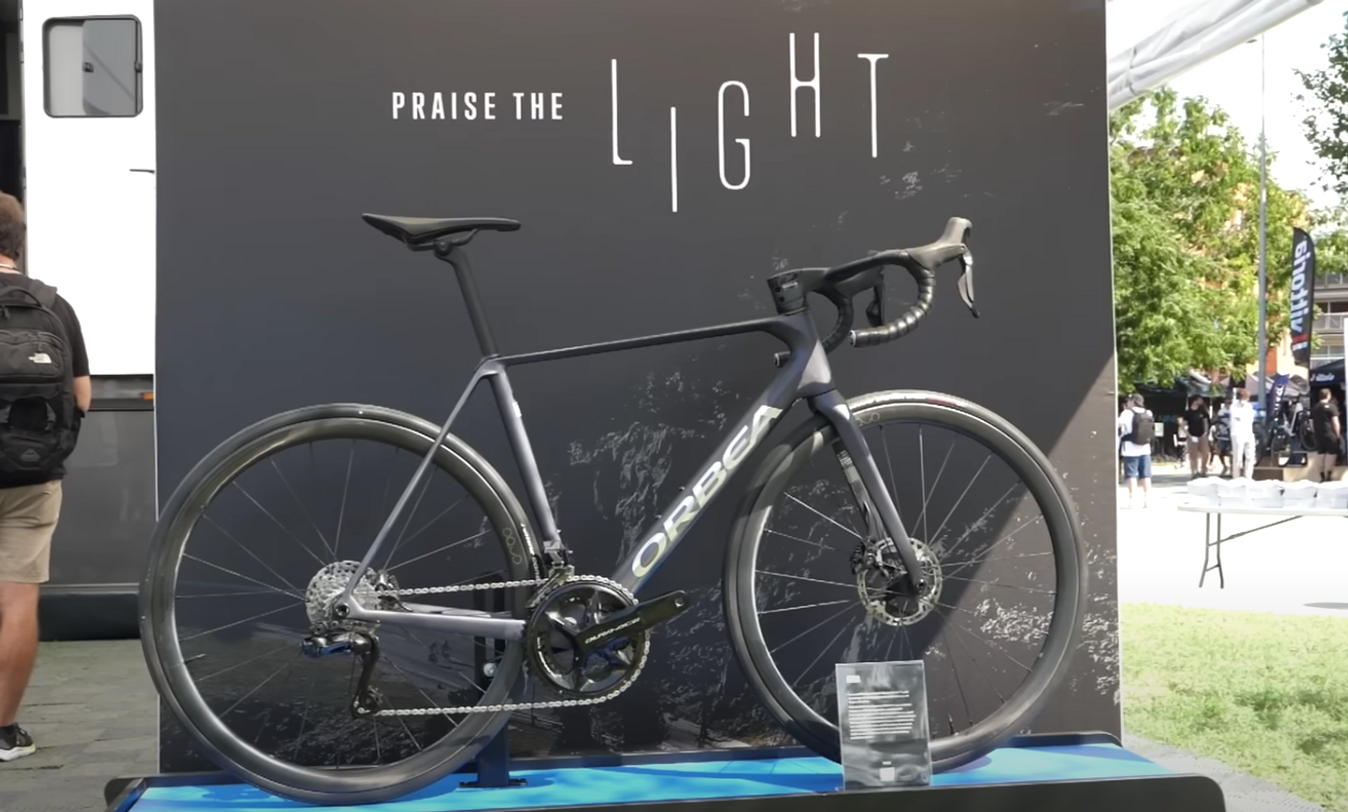
© GCN
The Orbea Orca on display at Sea Otter
Race bikes are constantly evolving as brands search for ways to eke out every scrap of performance possible, which has most recently led to the increasing domination of the one-bike-fits-all superbike. Pinarello, Colnago, Look and Van Rysel have all taken this now well-trodden route, as has Specialized, which discontinued its popular aero Venge range in 2020 upon the release of the Tarmac SL7.
The premise behind the superbike is simple: create a single bike that brings together both aero and lightweight qualities into one package. Such a bike wasn’t previously possible, mainly because aero tube profiles came with significant weight penalties that scuppered the lightweight part of the equation. Modern technology has now circumvented this and many brands have taken advantage to toss dedicated bikes into the scrapyard - but not all of them.
2023 saw some brands kick back against the purge of dedicated lightweight bikes, specifically Orbea, which released its latest Orca. In a rarity for the modern cycling industry, its release wasn’t joined by any aero claims at all, with the Spanish brand going all-in on the weight stakes. Factor also joined the party with its latest Factor O2 VAM, which it claimed is "the world’s fastest climbing bike".
In reality, climbing bikes never went away and most brands still offer them, but most would sit comfortably in the superbike category if the brands removed their aero offerings. Factor and, to a greater degree, Orbea have bucked this trend by releasing bikes that are solely designed around climbing performance. (THG)
Blurred boundaries

© Canyon
Canyon's new Endurace is among the endurance bikes leaning into off-road
2023 has been another year where gravel resists definition. If anything, this year has seen gravel become an even harder-to-define genre of cycling, with the boundaries at both ends of the spectrum blurring into greyer and greyer areas.
Endurance bikes have encroached on the ground that was previously reserved for gravel-specific bikes. Canyon, Pinarello, Focus and many other brands have released a new generation of endurance bikes that could quite happily handle a mixed surface ride. For starters, the maximum tyre width these bikes can accept is around 35mm with room to squeeze even larger rubber in between the frame in some cases. The geometry of these bikes is also heading more in the direction of gravel bikes, with a more upright position and a slightly longer wheelbase increasing control at speed and on looser terrain.
The capability of these new endurance bikes was made painfully apparent at this year's UCI Gravel World Championships. Although the eventual winners of both the men’s and women’s races were aboard gravel bikes, a whole swathe of the competition took to the start on road bikes fitted with the widest tyres they could manage.
At the same time, we've seen gravel bikes encroaching on the ground previously reserved for mountain bikes, one particular example being the 3T Extrema Italia, a drop-bar bike designed around the use of 2.2-inch 29er MTB tyres. Based on the trends of this year, gravel isn’t looking like it will be confined to a definition any time soon. (AH)
Virtual gears
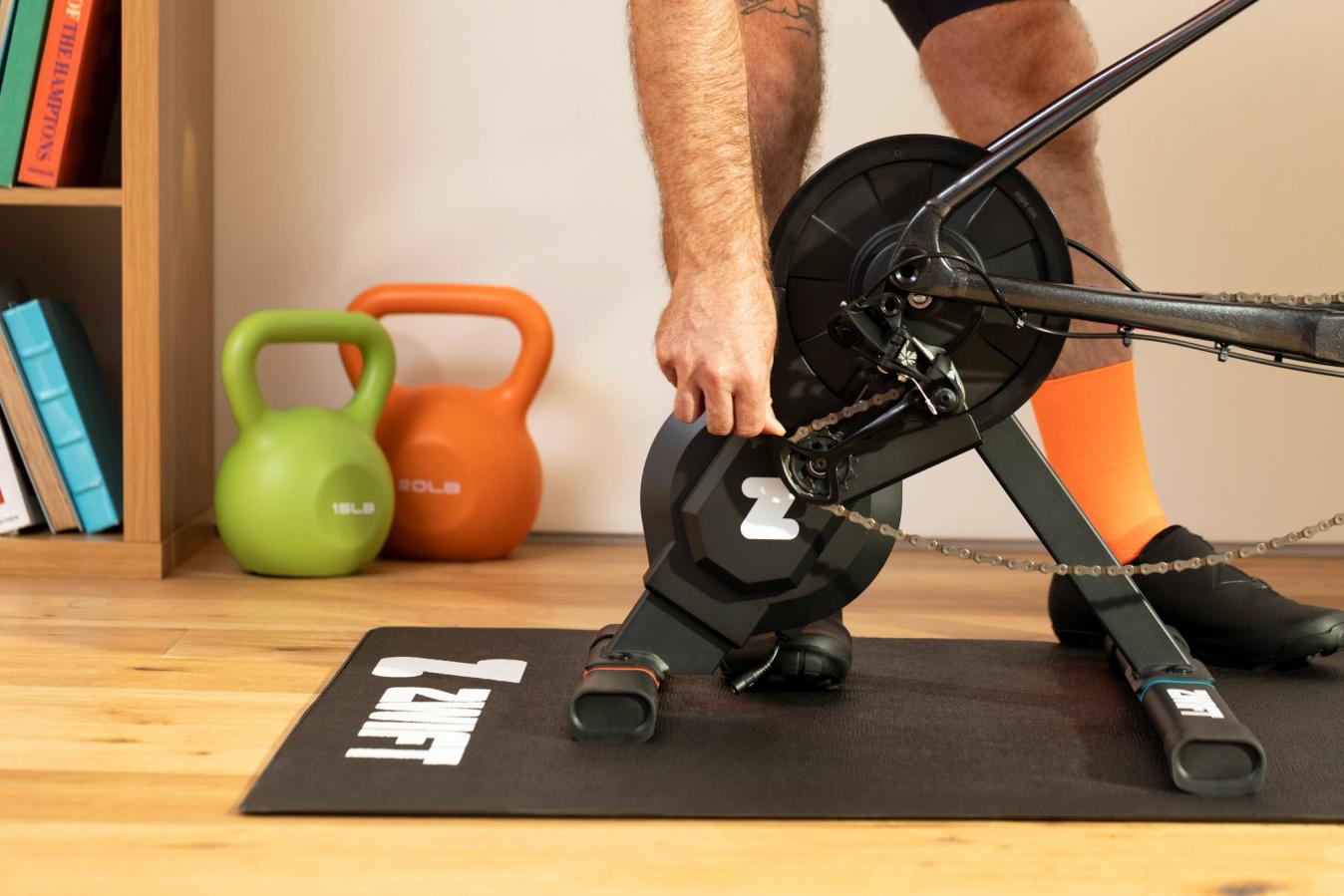
© Zwift
The Zwift Cog replaces the need to change gear physically, reducing noise and potential for dropped chains
Indoor training got a little bit more virtual this year, with Zwift releasing the Zwfit Hub One indoor trainer. Although from afar this direct drive trainer looks to be similar to the sea of others on the market, a closer look reveals something more interesting. Instead of using the regular configuration of fitting a standard road cassette to the body of the trainer, Zwift has done away with that and instead replaced physical gears with virtual ones.
Zwift has decided that virtual gears are the next move in the indoor training world and there are some notable benefits to them. Firstly, it means that the number of bikes that can be used in conjunction with the trainer is huge, with almost all 8-speed bikes and above compatible. Secondly, you are not wearing out an incredibly expensive cassette, with the single durable enough for over 10,000km of indoor riding.
Virtual gears are nothing new to indoor exercise bikes, with the likes of Wattbike and Wahoo both using virtually simulated gears on the static bikes on offer. This is, however, the first time technology like this has been used on a direct-drive indoor trainer. Virtual gears open up the use of indoor trainers to all types of bikes without the penalty of riding around on compromised gears, like that of a mountain bike, for example.
The introduction of the Zwift Cog and the Hub One trainer also signified a new collaboration between Zwift and Wahoo. Not long after the release of the Hub One trainer, the original Zwift Hub was discontinued. At the same time, the Wahoo Kickr Core matched the price of the outgoing trainer, added a preinstalled cassette to the package, and included a 12-month Zwift subscription. This was the latest in Wahoo and Zwift collaborations that saw Wahoo products come with Zwift subscriptions after Wahoo’s own virtual cycling platform, RGT, closed this Autumn. (AH)
Industry doom and gloom
2023 seemed like a snowball of bad industry news, rolling down the mountain and then gathering force and size as it sped through the summer and the autumn. Most cycling manufacturers saw their margins squeezed, many cut jobs, a few were sold on, and a couple ceased production entirely. Retailers had it just as bad, with major players such as Wiggle CRC and Probikeshop among those forced to enter administration.
There are a number of factors behind this industry ‘crisis’, but the clearest would seem to be the hangover from the cycling boom that occurred during the height of the COVID-19 pandemic. There was a surge in consumer activity through the various lockdowns, enough to fuel serious backlogs on the production lines, but lifestyles have steadily been returning to pre-pandemic ways, and the wave that was ridden for a good two years has now well and truly crashed. There have been suggestions of companies failing to plan ahead, but even those who knew it wouldn’t last forever have felt the pinch.
To go with the post-pandemic hangover, you have Russia’s war in Ukraine, which has caused significant upheaval to the global economy for two years now. Operating costs have soared, and this invariably is passed onto the consumer, who already has less money in their pocket due to the cost of living crisis fuelled by the same factors.
It has been a perfect storm of events that has left companies and consumers both suffering, and it has forced some serious soul-searching within the industry. There is a general confidence that things will improve, but plenty of realism that there’s much of this storm yet to be ridden out. (PF)
The rise of 1x

© GCN
Jonas Vingegaard using a 1x set-up at the 2023 Vuelta a España
Largely thanks to the dominance of Jumbo-Visma at this year's Grand Tours, one-by drivetrains have really left their mark on road cycling. Up until recently, the history of one-by groupsets in the pro peloton was that of trial and failure, with the Aqua Blue team using the single-ring setup in 2018 with little success and a fair few complaints.
The supposed benefits of 1x are that you get rid of an un-aerodynamic front derailleur and also decrease the chance of a mechanical failure, given there are fewer parts to go wrong. Despite Aqua Blue's complaints of chain slips, dedicated modern 1x groupsets should, in theory, improve chain retention.
Teams sponsored by SRAM now have the choice of running a single or double chainring, and this year Jumbo-Visma have repeatedly used single-ring set-ups in time trials and road stages to plenty of success. This season certainly feels like the turning point for one-by groupsets on the road.
With the effectiveness proven in 2023, will we see more teams adopting a one-by setup in 2024? For the Classics, it could be a smart move from teams with this as an option, with the chain retention properties an attractive prospect for the cobbled races. Although some riders have used a bodged Shimano set-up, will 2024 mark the year Shimano embraces one-by on the road? Only time will tell. (AH)
The creeping influence of AI
The influence of AI over everyday life is becoming ever greater and it is now also increasingly creeping into the world of cycling. For everyday cyclists, it could be accompanied by some significant safety technology, at least if the ‘Coalition for Cyclist Safety' has its way. Formed by multiple brands in 2023, including BMC, Bosch, Shimano and Trek, it is aiming to harness the power of V2X technology to make roads safer for cyclists.
V2X, standing for vehicle to everything, is a form of communication technology that can be built into vehicles, traffic infrastructure, mobile phones and now also bikes. Everything connected communicates key information across a safety network, which can then be relayed back to vehicles to provide useful information, like if there is traffic or hazards in the area. The coalition hasn’t revealed its full aims for the technology but Canyon says that it can warn road users of nearby cyclists and one day harness greater power, like preventing a motorist from opening a car door when a cyclist is passing. The German brand has confirmed that it will integrate the tech into certain e-bikes by 2026.
AI’s reach also extended beyond safety into the realms of pro racing in 2023, where it helped to form the dietary plans for Jumbo-Visma’s riders at the Tour de France, including eventual winner Jonas Vingegaard. That could open up a new frontier that sees AI become a central pillar in teams’ pursuit of marginal gains. (THG)
Inflation on the fly

© Velo Collection (TDW) / Getty Images
Edoardo Affini with a front tyre pressure adjustment system at Paris-Roubaix
One of the biggest developments from a tech perspective this year came at Dwars door Vlaanderen, where Edoardo Affini used an adjustable tyre pressure system in a pro race for the first time. The same technology was out in force in Paris-Roubaix a week later, and in fact there were two separate systems – proof that this isn’t just a one-off idea from one party.
While certain members of Affini’s Jumbo-Visma squad used KAPS (Kinetic Air Pressure System) from Dutch company Gravaa, Team DSM used the Atmoz system from Scope. Both products feature an enlarged hub that contains a pressurised reservoir of air, plus a motor, with a hose running up the spoke to the valve, where the tyre can release or take in air at the push of a button on the handlebars.
The benefit for those riders in the cobbled Classics, where the road surface is changing regularly, is to run a lower pressure on the rough cobblestone sectors and then a higher pressure for the tarmac – all without having to stop. There is a weight penalty but there are gains to be made in terms of rolling resistance, not to mention comfort and puncture protection.
It has been trialled at the top level of the sport but it’s not difficult to see how this might filter down, especially when cyclists are more inclined than ever to mix up the terrain in their riding. (PF)
Sleeker and sportier e-bikes
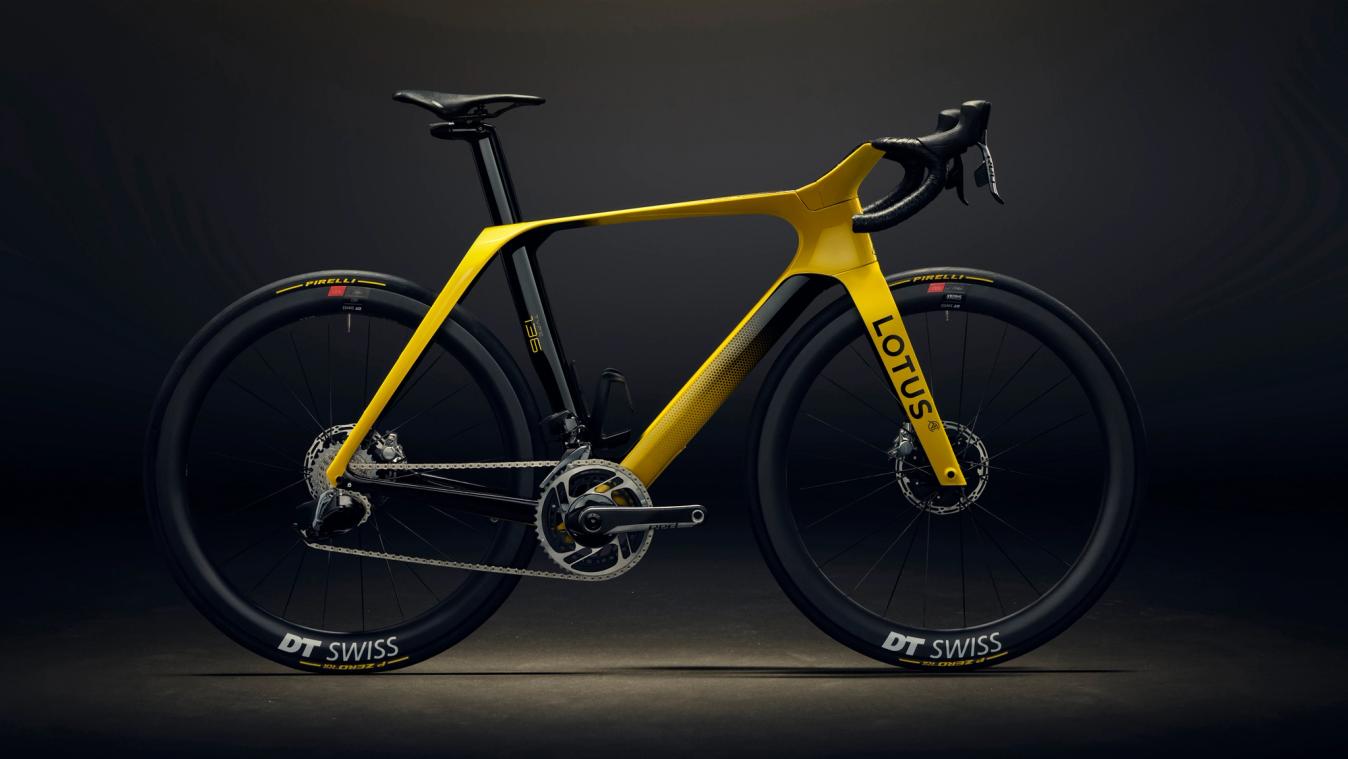
© Lotus
The Lotus Type 136
When you think of an e-bike, you tend to think of a rather clunky and cumbersome sort of machine – something that, for all its free power, is not really about going very fast. However, things are changing as e-bikes continue along a rising trajectory that doesn’t look set to plateau any time soon.
While perhaps still most readily associated with commuting or getting about town, electric tech has been established in the world of mountain biking for a while now, enabling riders to go further and enjoy more of the downhills. What seems to have accelerated this year is motors in performance-oriented drop-bar bikes.
The show-stealer here was, of course, the Lotus Type 136, which featured a striking aero frame inspired by Olympic track bikes plus a super light 1.2kg motor system. At 9.8kg in total, and with the motor disguised as a water bottle, you wouldn’t know this was an e-bike. Now, with a price tag of £20,000, this sort of thing is going to be niche, but it does point to a wider trend of giving e-bikes a more sporty, performance-minded look and feel.
This is particularly apparent in the world of gravel – itself bridging the divide between road and MTB – with Specialized, Cervélo, LeMond, and Moots among the companies to launch drop-bar, gravel-oriented e-bikes in 2023. (PF)
The start of a hub gear revolution?

© Classified
The Powershift Hub from Classified
Hub gears have made their debut in the professional peloton this year, with both Uno-X and Lotto-Dstny trialling the two-speed hub gear system from Classified. This system is another way to ditch the front derailleur, but unlike one-by systems, the full sweep of gear ratios can be retained. The hub features a standard 1:1 ratio as well as a stepped-down 1:0.7 climbing ratio that closely emulates the ratios a traditional double chainset would provide.
Having the front gears removed and shifted to within the hub does allow for some overall system benefits, such as the aerodynamic advantage of not having a front derailleur. Similarly to one-by set-ups, chain retention can also be improved, with the need for less chain in the system and also, narrow-wide chainrings can be used. Another benefit of hub gearing is that the chainline can be optimised so that the drivetrain losses due to poor chainlines can be minimised across the whole spread of the cassette.
Interestingly, Classified has released an in-depth white paper based on its testing and research into the use of hub gears and has found that as a whole system, using a Classified hub has no performance loss when compared to a traditional double chainring setup. This is a massive step forward for this technology as hub gears in the past have introduced far higher system drag, making them an unattractive option for competitive cycling.
It will be interesting to see how this technology continues to develop in the future. Although 2023 did not see any breakthrough success attributed to the Classified hub, it also did not cause any issues for teams that trialled it. With some potential benefits suited to specific races, could this be the start of a hub gear revolution? (AH)
The war on aero
.jpg?w=1348&auto=format)
© Velo Collection (TDW) / Getty Images
Spanish sensation Juan Ayuso is among those who like to turn their shifters inwards
One of the biggest trends in the pro peloton has been the combination of narrow bars and angled shifters. This was, of course, done in the name of aerodynamics, in a bid to produce a narrower frontal area when riding on the hoods. It was pioneered by the Dutch rider Jan-Willem van Schip, and has grown in prominence in the past couple of years, but really broadened this year.
Anything that catches on at the top of the sport is bound to filter down through the ranks, and it’s a sight that has become more common on the amateur and criterium scenes, and even at club level. It’s also something that has caused a stir, with some of the more extreme set-ups sparking ridicule and outrage.
However, it is soon to be stamped out, as the UCI announced its intentions to ‘restrict’ the set-up in 2024 and then ban it in 2025. We’ve had similar issues this year on the UK time trial scene, with the CTT’s AGM dominated by proposed regulations over aero fairings and the like. Aerodynamics are increasingly butting up against safety, fair play and, some might say, good taste. (PF)
What do you think were the biggest tech trends in 2023? Have we missed any? Let us know in the comments down below!












